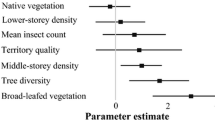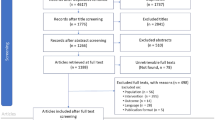Abstract
We provide an overview of terrestrial animal translocations carried out for conservation purposes in Britain, summarising what has been achieved in recent decades and discussing the issues raised by this approach to conservation. In the last 40 years, at least nine species have been reintroduced following extinction in Britain (or at least one country within Britain), including five birds, one mammal, one amphibian and two invertebrates. Many more species have been translocated within Britain to establish additional populations in order to improve conservation status. We discuss the guidelines and protocols used to assess translocation projects in Britain, notably the IUCN guidelines, most recently revised in 2013. We also discuss the likely use of species translocations in future and suggest that, in our increasingly fragmented landscapes, they will have an important role to play in conservation restoration, especially for animals with limited mobility. Moving species around is a complex undertaking and our understanding of the inherent risks involved, including the risks from disease, has improved significantly in recent years. Conservation translocations should be considered in the context of species recovery targets and high standards should be maintained so that disease risks and other potentially negative impacts are minimised.
Similar content being viewed by others
References
Bainbridge IP, Evans RJ, Broad RA, Crooke CH, Duffy K, Green RE, Love JA, Mudge GP (2003) Re-introduction of White-tailed Eagles (Haliaeetus albicilla) to Scotland. In: Birds of prey in a changing environment, Thompson DBA, Redpath SM, Fielding AH, Marquiss M, Galbraith, CA (editors), Edinburgh: Scottish Natural Heritage, pp 393-406
Batson WG, Gordon IJ, Fletcher DB, Manning AD (2015) Translocation tactics: A framework to support the IUCN guidelines for wildlife translocations and improve the quality of applied methods. Journal of Applied Ecology; DOI: 10.1111/1365-2664.12498 [Online July 26, 2015]
Bright PW (1993) Habitat fragmentation‐problems and predictions for British mammals. Mammal Review 23(3‐4):101-111
Bright P, Morris P, Mitchell-Jones T (2006) The Dormouse conservation handbook (2 nd Edition), Peterborough: English Nature.
Brown MJF, Sainsbury AW, Vaughan-Higgins RJ, Measures GH, Jones CM, Gammans N (2016) Bringing Back a Healthy Buzz? Invertebrate Parasites and Reintroductions: A Case Study in Bumblebees. EcoHealth. doi:10.1007/s10393-015-1093-5
Buckley J, Foster J (2005) Reintroduction strategy for the pool frog Rana lessonae in England. English Nature Research Report 642, Peterborough: English Nature
Carter I, Newbery P, Grice P, Hughes J (2008) The role of reintroductions in conserving British birds. British Birds 101:2-25
Cushman S A (2006) Effects of habitat loss and fragmentation on amphibians: a review and prospectus. Biological Conservation 128(2):231-240.
Dickie I, Hughes J, Esteban A (2006) Watched like never before: The local economic benefits of spectacular bird species, Sandy: RSPB
Dodd CK (2010) Amphibian ecology and conservation: a handbook of techniques, Oxford: Oxford University Press.
Edgar P, Foster J, Baker J (2010) Reptile habitat management handbook, Bournemouth: Amphibian and Reptile Conservation
Ewen JG, Armstrong DP, Parker KA, Seddon PJ (editors) (2012) Reintroduction Biology: Integrating Science and Management, Chichester: Wiley-Blackwell Publishing
Gammans N, Sears J, Lee P, Hyde P, Perkins G, Curson J (2015) The reintroduction of the Short-haired Bumblebee. British Wildlife 26:345-352
Hetherington D (2006) The Lynx in Britain’s past, present and future. Ecos 27:66-74
Hodder KH, Bullock JM (1997) Translocations of native species in the UK: implications for biodiversity. Journal of Applied Ecology 34:547-565
IUCN (2013) Guidelines for reintroductions and other conservation translocations. https://portals.iucn.org/library/sites/library/files/documents/2013-009.pdf. Accessed July 20 2015
Lawton JH, Brotherton PNM, Brown VK, Elphick C, Fitter AH, Forshaw J, Wynne GR (2010) Making Space for Nature: a review of England’s wildlife sites and ecological network. Report to DEFRA
Lever C (2009) The Naturalized Animals of Britain and Ireland, London: New Holland
Love JA, Ball ME (1979) White-tailed Sea Eagle (Haliaeetus albicilla). Reintroduction to the Isle of Rhum, Scotland 1975-1977. Biological Conservation 16:23-30
Madsen T, Ujvari B, Olsson M (2004) Novel genes continue to enhance population growth in adders (Vipera berus). Biological Conservation 120(1):145-147
Marren P (2002) Introductions – are we conserving species at the expense of nature? British Wildlife 14:77-82
Meek WR, Burman PJ, Nowakowski M, Sparks TH, Burman NJ (2003) Barn Owl release in lowland southern England – a twenty-one year study. Biological Conservation 109(2):271-282
National Species Reintroduction Forum (2014) The Scottish code for conservation translocations. http://www.snh.gov.uk/protecting-scotlands-nature/reintroducing-native-species/scct/. Accessed July 20 2015
Neff MW, Larson BM (2014) Scientists, managers, and assisted colonization: Four contrasting perspectives entangle science and policy. Biological Conservation 172:1-7
Pain DJ, Carter I, Sainsbury AW, Shore RF, Eden P, Taggart MA, Konstantinos S, Walker LA, Meharg AA, Raab A (2007) Lead contamination and associated disease in captive and reintroduced red kites Milvus milvus in England. Science of the Total Environment 376: 116-127
Pearce-Higgins JW, Ausden MA, Beale CM, Oliver TH, Crick HQP (editors) (2015) Research on the assessment of risks and opportunities for species in England as a result of climate change. Natural England Commissioned Reports, Number 175
Peeler EJ, Oidtmann BC, Midtlyng PJ, Miossec L, Gozlan RE (2011) Non-native aquatic animals introductions have driven disease emergence in Europe. Biological Invasions 13(6):1291-1303
Sainsbury AW, Vaughan‐Higgins RJ (2012) Analyzing disease risks associated with translocations. Conservation Biology 26(3):442-452
Seddon PJ, Armstrong DP, Maloney RF (2007) Developing the science of reintroduction biology. Conservation Biology 21(2):303-312
Seddon PJ, Griffiths CJ, Soorae PS, Armstrong DP (2014) Reversing defaunation: Restoring species in a changing world. Science 345(6195):406-412
Sewell D, Baker JM, Griffiths RA (2015) Population dynamics of Grass Snakes (Natrix natrix) at a site restored for amphibian reintroduction. The Herpetological Journal 25(3):155-161
Smart J, Amar A, Sim IMW, Etheridge B, Cameron D, Christie G, Wilson JD (2010) Illegal killing slows population recovery of a re-introduced raptor of high conservation concern – The red kite Milvus milvus. Biological Conservation 143:1278-1286
Tallmon DA, Luikart G, Waples RS (2004) The alluring simplicity and complex reality of genetic rescue. Trends in Ecology and Evolution 19(9):489-496
Thomas CD (2011) Translocation of species, climate change, and the end of trying to recreate past ecological communities. Trends in Ecology and Evolution 26(5):216-221
Thomas J, Lewington R (2010) The butterflies of Britain and Ireland, Gillingham: British Wildlife Publishing
Toms MP, Crick HQP, Shawyer CR (2001) The status of breeding Barn Owls Tyto alba in the United Kingdom 1995-97. Bird Study 48:23-37
Vila C, Sundqvist AK, Flagstad Ø, Seddon J, Kojola I, Casulli A, Ellegren H (2003) Rescue of a severely bottlenecked wolf (Canis lupus) population by a single immigrant. Proceedings of the Royal Society of London B: Biological Sciences 270(1510):91-97
Whiteley AR, Fitzpatrick SW, Funk WC, Tallmon DA (2015) Genetic rescue to the rescue. Trends in Ecology and Evolution 30(1):42-49
Wilson CJ (2004) Could we live with reintroduced large carnivores in the UK? Mammal Review 34(3):211-232
Acknowledgments
We are grateful to our many colleagues at Natural England, Amphibian and Reptile Conservation and RSPB for useful discussion and debate about species translocations. We particularly thank those who commented on a draft of this paper or provided other useful information including Andy Brown, Jon Curson, Mary Davies, Paul Edgar, Phil Grice, David Heaver, Kat Walsh and Tony Sainsbury. Many of the translocations we have been involved with in recent years have benefitted from a long-term partnership with the Zoological Society of London (ZSL), helping to ensure that projects have been carried out to a high standard. We thank Katie Beckmann, Tim Hopkins, Jenny Jaffe, Fieke Molenaar, Gabriela Peniche, Tony Sainsbury, Justine Shotton and Rebecca Vaughan-Higgins for their involvement and their resulting contribution to the conservation of threatened species in Britain. We also thank the many other organisations and individuals involved in these species translocation Projects.
Author information
Authors and Affiliations
Corresponding author
Rights and permissions
About this article
Cite this article
Carter, I., Foster, J. & Lock, L. The Role of Animal Translocations in Conserving British Wildlife: An Overview of Recent Work and Prospects for the Future. EcoHealth 14 (Suppl 1), 7–15 (2017). https://doi.org/10.1007/s10393-015-1097-1
Received:
Revised:
Accepted:
Published:
Issue Date:
DOI: https://doi.org/10.1007/s10393-015-1097-1




